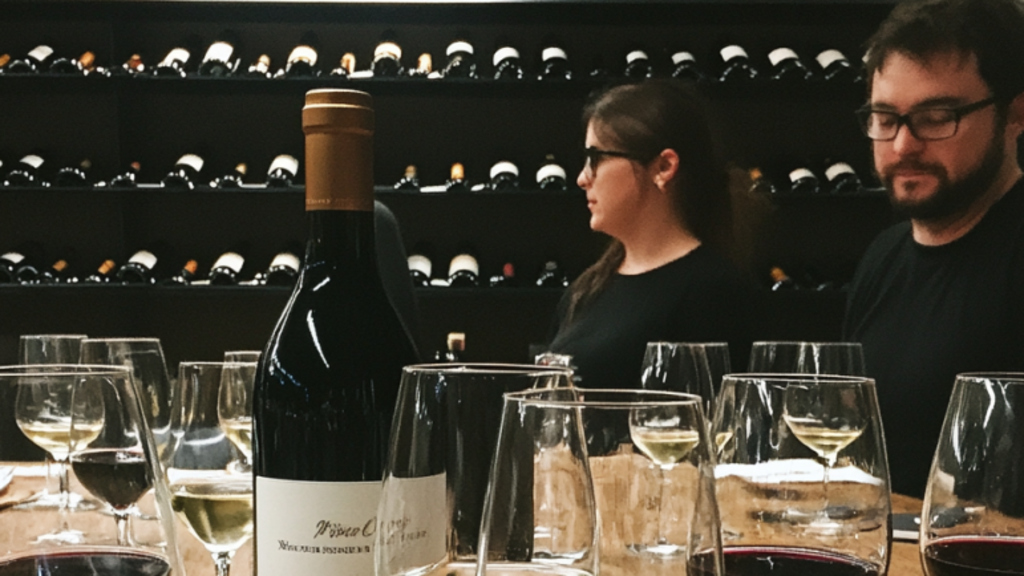Who Rates the Best Wines?
The World of Wine Critics

Time and again, you will find ratings from various journalists, wine experts or specialist magazines alongside well-known wines. But what makes these ratings so special?
The world of wine critics
In the world of wine, critics play a role that should not be underestimated. They rate wines, provide guidance and sometimes even manage to significantly increase the value of a wine. Their assessments are anything but uniform. Depending on the system and personality of the critic, the results can vary greatly - a fact that is both a blessing and a curse for winegrowers and connoisseurs.
While some critics promote the discovery of new wines with their expertise, others are not without controversy. They are sometimes accused of being subjective or even biased. Nevertheless, their ratings remain an important factor, especially on the international wine market.
The three big names: Robert Parker, Wine Spectator and James Suckling
Robert Parker and “The Wine Advocate”
Robert Parker is probably the most influential wine critic in the world. His 100-point system, which was introduced in 1978, is based on clear structures: taste, structure, longevity and ageing potential are among the criteria assessed. Wines with a score of over 90 points are considered excellent. His influence is so great that a high “Parker score” can significantly increase the price of a wine. However, Parker is also often accused of preferring wines with strong aromas and lots of wood, which is not to everyone's taste.
Did you already know? Rumor has it that Robert Parker had his nose insured for $1,000,000.
Wine Spectator
The magazine “Wine Spectator” has also established itself as an authority. Here, a team of experts rates wines according to a similar points system to Parker. There is a particular focus on diversity: the spectrum covers everything from inexpensive wines to premium wines. Every year, the magazine publishes the “Top 100” list, an important guide for wine lovers worldwide.
James Suckling
James Suckling, once editor-in-chief of the “Wine Spectator”, has made a name for himself with his own portal. His style is uncomplicated and he focuses on concise ratings. Like Parker, Suckling also uses the 100-point scale. His preference for wines with intense fruit aromas and pronounced acidity is unmistakable.
Did you already know? James Suckling is said to taste more than 25,000 wines a year.
European classics: Gault Millau, Falstaff and Gambero Rosso
Gault Millau
Gault Millau, originally known in France as a restaurant guide, has steadily expanded its importance in the field of wine criticism. With its 20-point system, it sets standards for precision and sophistication. A wine is considered exceptional from 15 points and world class from 18 points. In Germany, Gault Millau has firmly established itself and devotes itself in particular detail to analyzing German wineries. Every year, it honors outstanding winegrowers and collections, which gives it a certain authority in the German wine scene. His reviews are appreciated by experts and amateurs alike, as they offer a great balance between regional identity and international comparability.
Falstaff
The Austrian magazine Falstaff has developed from a national magazine into an internationally respected publication. What began in Austria is now also well known in Germany, Switzerland and, more recently, Italy and beyond. The Falstaff Wine Guide offers an interesting perspective. The rating is based on the globally established 100-point scale. The guide emphasizes diversity and innovation and often discovers smaller wineries that impress with their special approaches. Its annual wine guide is characterized by thematic focuses, such as the appreciation of lesser-known grape varieties or wine regions that are often only at the beginning of their success.
Gambero Rosso
Italy shines with its Gambero Rosso, which has been at the heart of Italian wine criticism for decades. With its simple but effective rating system - one to three glasses - it highlights wines of exceptional quality. Three glasses is considered the highest award and is synonymous with excellence. Particularly charming is the fact that the Gambero Rosso honors not only top wines, but also affordable gems, such as three-glass wines that are available for less than 15 euros. The wine guide is completely revised every year and offers a fresh overview of more than 20,000 wines in each edition. It values not only the big names, but also regional specialties and sustainably produced wines.
Critics and enjoyment: friends or foes?
Although critics play an important role, wine remains a matter of taste. A humorous approach: the best critic remains your own palate. Tasting, enjoying and experimenting - these are the true pleasures of wine drinking.
Cheers! 🍷


